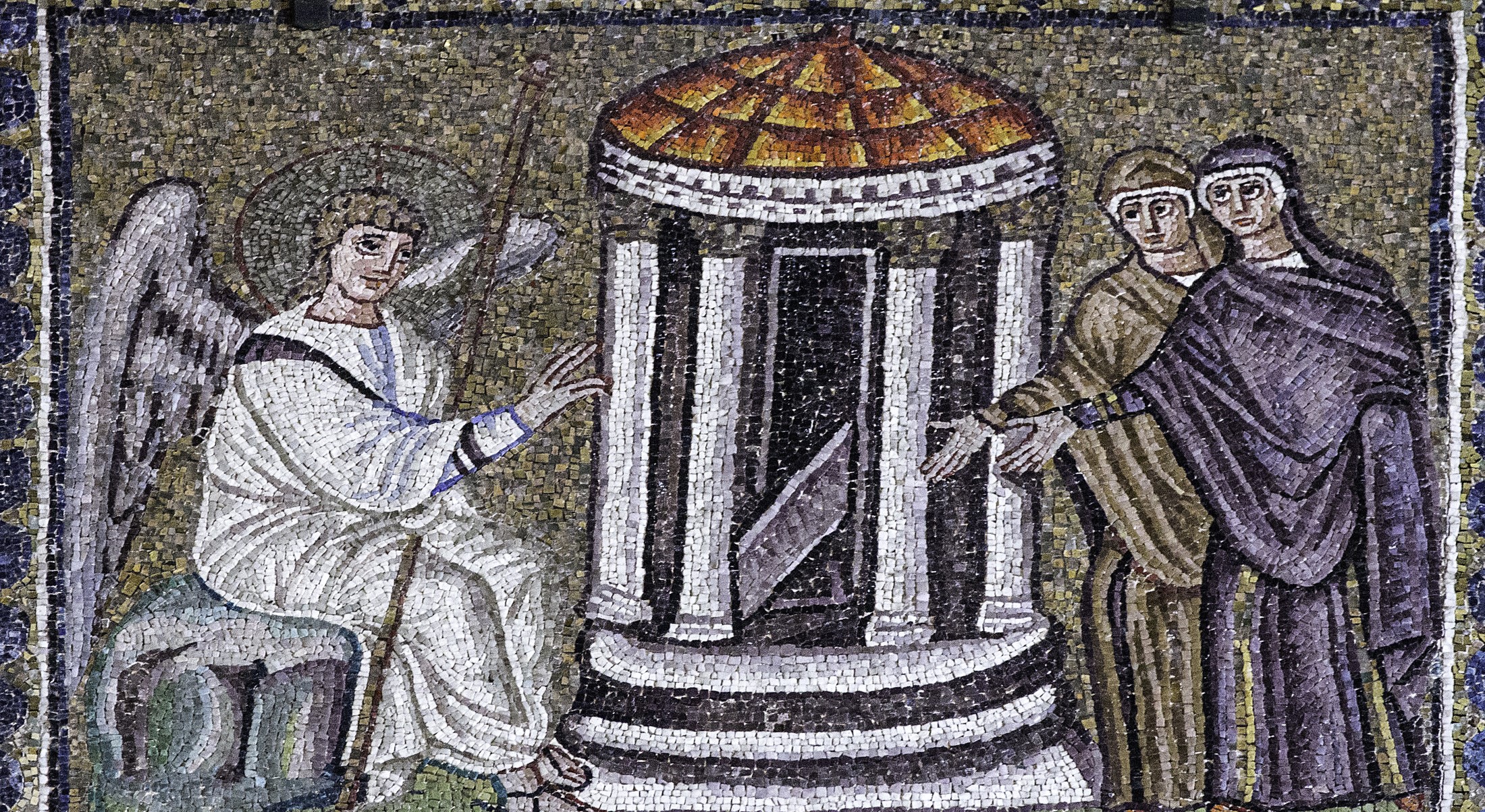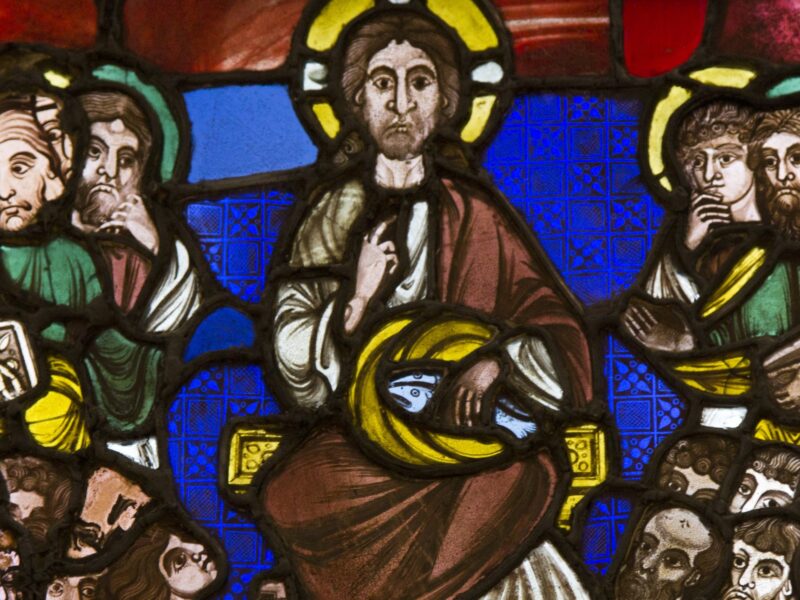
He Is Not Here
Easter Sunday. Fr David Rocks responds to the desire of those who seek to see Jesus.
Just over forty days ago or so, we began our Lenten journey, a solemn time of preparation for Easter. Today, that journey should be at an end, right? Perhaps out Lenten observance was challenging, as it usually is, and we have needed to be recalled to it at times, perhaps disappointed in ourselves. But the Lent Courses are over and the Lent Book has been read – and now we are here, today.
He is not here. Those words of Mark’s Gospel at the Easter Vigil are the only certain words in the Gospel passages both from Mark, and from John on Easter Morning. The only evidence available to the disciples who come to the tomb is that he is not here. In John’s account, Mary thinks it to be a crime scene – they have taken away the Lord, I do not know what they have done with him. It is a crime scene with little ‘admissible evidence’ – neatly folded grave clothes are in stark contrast with the gruesome scenes of Good Friday.
Now that our Lenten journey has concluded with the solemn celebration of Easter, no doubt we wish to take some rest, time to rejoice. No doubt, the disciples of Jesus felt they needed rest. It was a long journey from Galilee to Jerusalem, a perilous one from Gethsemane to Golgotha. Mary and her companions sought to pay honour to his broken body, or perhaps to spend time there. Peter and James, paralysed with fear, taking solace from one another. Mary has lost everything, all she now has is the grave in which he lies, and then – disaster!
Easter isn’t supposed to be about disaster. It’s supposed to be the happy ending of a dramatic story, because all stories are supposed to end with happily ever after. This is not just the stuff of fairytales but a deep-seated desire within us. When people come on television to tell true stories of how they have overcome great difficulty or calamnity, even significant loss, the story usually resolves with some kind of ‘coming to terms’ and acceptance, which brings hope. Like Mary, we do this every time we visit the grave or look at a photo or memorial to someone we have loved – we want to hold on and keep the memory close. We seek hope, but what will we find? Wouldn’t it be so very painful to be disappointed.
Our journey through Lent is a very familiar one – from receiving ashes to the themes of temptation and transfiguration; our entry into Passiontide, and the veiling of images. On the Fifth Sunday of Lent, as we veiled the image of the Cross, we said with the disciples in John’s Gospel ‘Sir, we would like to see Jesus.’ When the Cross was unveiled on Good Friday, we had the opportunity to see Jesus, and him crucified. We heard the evidence together as the Scriptures were proclaimed, we saw for ourselves as we venerated the Cross, and we received him in Holy Communion kept aside from Mass the evening before. The Cross stands on the altar as a memory of that, but joining with the disciples at the tomb today, dare we ask: ‘We would like to see Jesus’ if the answer is ‘He is not here.’
Because the answer is we need to go on another journey – all the way back to Gallilee. There we will see him, as he told us. That’s our Easter journey – one that seeks to magnify our hope with a deep dwelling in faith. The other disciple, who arrived at the crime scene first also went in; he saw and he believed.
Our Lenten journey was one of recall and remembrance, as we acted out the events that lead to the death of Our Lord. It is very easy, and very helpful, for us to consider our own path of suffering and challenge in this journey. We do this every time we come together for Mass. Then we see him when he comes to us in Holy Communion, after which the Ciborium is veiled in the Tabernacle. Each time we do that, we start on a new journey, and the Mass ends when we are told to Go in Peace. It is the joy of embarking on that new journey which is ours.
Readings: Acts 10:34,37-43 | Colossians 3:1-4 | John 20:1-9
Image: from a 6th century mosaic of the empty tomb at the church of Sant’Apollinare Nuovo in Ravenna, photographed by Fr Lawrence Lew OP



Frances Flatman
Liked